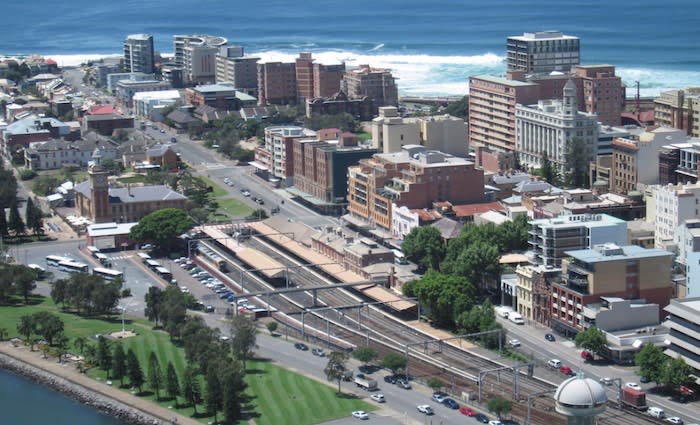Australia's top 10 real estate growth cities in 2018: Hotspotting's Terry Ryder
If you can believe the headlines, Australian property values are falling. The thing is, you can’t believe the headlines. In most of our major markets, values are not falling at all.
The problem is the way research firms and economists like to generalise about price data, with a single number describing movements in the mythical thing they call “Australian property prices”. Like most generalised figures, this serves only to create confusion and misinformation.
According to recent headlines, national values are falling, which means the average situation with prices is a small decline. This was an annual decrease of 0.4 percent, according to one source.
But, lurking behind this pointless and misleading single figure which apparently depicts our entire vast nation, are the following factors:
- Regional areas overall are rising.
- Five of the eight capital cities are rising.
- The only significant market showing annual decline is Sydney, but the size of that market is dragging down the overall average.
The truth is that Australia abounds with major cities, some capital, some regional, with growth markets. Inspired by that reality, here are my ten leading cities with growth trajectories in 2018:-
Hobart: The Tasmanian capital is currently recording double-digit growth in its house prices and is likely to continue showing growth, underpinned by a vastly improved state economy. Property is selling faster there than any other capital city, vacancies are lower there than anywhere else and there’s no sign of activity slowing down.
Canberra: Most research sources have Canberra values rising steadily. SQM Research’s index has Canberra up 8.5 percent. This is not surprising as the ACT economy is strong, Canberra vacancies are almost as low as Hobart’s, rents are rising and land prices are high (as a result of the ACT Government controlling land releases). All things considered, Canberra should be a national leader on price growth this year.
Brisbane: Overall, Brisbane isn’t showing much growth, but values are rising. When you look behind the generalised data, there are precincts with strong price rises. I expect Brisbane growth to gradually pick up this year because the underlying economy is improving, population data is favouring South-East Queensland again and infrastructure spending is rising. The affordability comparison also favours Brisbane.
Adelaide: The SA capital is similar to Brisbane. The generalised data shows only minor price growth, but individual precincts are doing much better, especially the top end. The SA economy is stronger than most realise and its steady improvement will boost the property market. I expect price growth is pick up as the year progresses. Adelaide offers great value-for-money and much better yields than the biggest cities.
Perth: The WA capital is one of those cities where values overall are still down, but it depends on whose figures you believe. SQM records a 3 percent annual rise in its Asking Prices Index for Perth. My own research shows that most of the million-dollar suburbs have had double-digit growth in the past year. There’s no doubt the Perth downturn is over and we will see further evidence of growth as the year unfolds.
Melbourne fringes: The single-growth figure to describe an entire large city never tells the full story. Melbourne overall has passed its peak but the outer ring suburbs are still very strong. The price growth in the past year in the northern fringes around Epping, the far south-east including Cranbourne, and the south-western regions around Werribee and Wyndham Vale, has been exceptional.
Newcastle/Hunter Region: The City of Newcastle has been one of the nation’s outstanding markets recently. Values overall have increased in double digits and many suburbs have grown their median house prices by over 20 percent. The local economy is thriving and the affordability comparison with Sydney has helped. Now the growth is rippling out to nearby areas, including the towns of the Hunter region.
Geelong and nearby regions: Geelong has been the outstanding market in Victoria in the past year or so, and continues to deliver strong sales activity and price growth. It’s part of a wider trend, in which regional centres close to Melbourne are attracting spill-over population growth and demand for homes. Locations north and south of Melbourne continue to attract extraordinary sales activity and price growth.
Ballarat: This strong regional city could be included the previous paragraph as a regional centre near the state capital, but it deserves its own exclusive mention. More and more Melbourne buyers are targeting Ballarat because it’s well-connected to the big city and offers attractive affordability and a different kind of lifestyle. This is now a very busy market and I expect prices to show solid rises this year.
Sunshine Coast: I know many who followed our advice and bought into the Sunshine Coast market 12-18 months ago: they’re happy punters. The region’s economy is transitioning to a place of greater diversity and strength – and this is driving real estate demand. It’s attracting lots of new residents. This process is still in its infancy and there’s plenty more growth to come. Noosa, which has under-achieved for 10 years, has joined the growth party.
Terry Ryder is the founder of hotspotting.com.au
twitter.com/hotspotting
